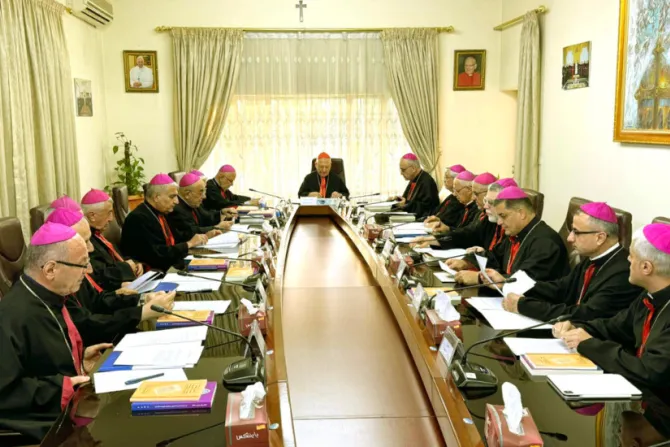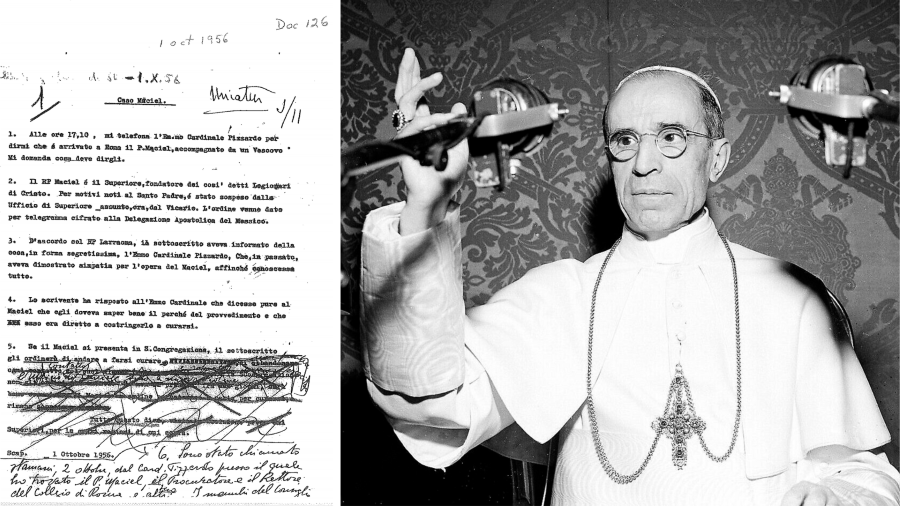I recently interviewed some top Catholic writers on the subject of the Rosary. I asked them one question: What is the most amazing thing about the Rosary that nobody knows about? But first, I’ll begin with what I think is the most amazing and least known Biblical treasures about the Rosary:
THE GOLDEN LAMPSTAND
I first learned about this special connection from one of my Scripture professors, and I have yet to see anybody write about it or even mention it since.
Inside the tent of the Tabernacle of Moses, there were three artifacts. There was the (1) Ark of the Covenant, which took the primary position, but there was also the (2) Golden Table of twelve loaves of bread and a flagon of wine and the (3) Golden Lampstand. The Golden Lampstand was the basis for the menorah.
These three artifacts have been considered Trinitarian in nature with the Ark of the Covenant bearing the Mercy Seat, the throne for God, the Father; the Golden Table with its bread and wine Eucharistically representing God, the Son; and the Golden Lampstand as the third member of the Trinity, the Holy Spirit.
But how does the Golden Lampstand represent the Holy Spirit, much less the Rosary? The lampstand is described in detail at Exodus 25: 31-40 RSV-CE. It has several branches, which are covered with “cups made like almonds, each with capital and flower.”
The lampstand looks both forward and backward, inasmuch as it represents what Moses saw on Mount Sinai during his banquet with the eternal God. Looking back, the Golden Lampstand is a stylized representation of the Burning Bush that Moses saw earlier in his life. It is also thought to be a representation of the Tree of Life.
The lampstand also looks forward to Pentecost! Why Pentecost? When the lampstand was burning, all the “cups made like almonds” would be filled with burning oil. The lampstand, therefore, would be covered in “tongues of flame” just like at Acts 2:3, when the Holy Spirit came to the upper room like “the rush of a mighty wind” and “there appeared to them tongues as of fire, distributed and resting on each one of them.” The Apostles and disciples grouped around the Blessed Mother became a living lampstand!
In this way, the Church, too, is represented by the Golden Lampstand and the Burning Bush, as it burns but is never consumed, inasmuch as the “Gates of Hell” will never prevail against the Church. The “pure gold” of the lampstand is likely also a parallel typological basis for both the immaculate nature of the Church, as bathed in the blood of the Lamb, and the Immaculate Conception.
But where is the Rosary in all this? The Golden Lampstand is a depiction of an almond tree, as it is covered in almond blossoms. There is something special about the number of flowers on the golden almond tree. Though it’s somewhat difficult to gather from the text of Exodus 25, most ancient depictions of the lampstand includedfifty flowers. Where else do we find fifty flowers, in particular roses, linked together in branches? The Rosary! The decades of the Rosary, each containing ten beads, together account for fifty rose blossoms.
Amazing, right? Here are some more amazing things about the Rosary as told to us by authors and historians of the Rosary. Be sure to check out their books following the links below!
THE BOWL OF ROCKS
Patricia Kasten responded with the following amazing story about the origin of the Rosary. Kasten is the author of Linking Your Beads: The Rosary’s History, Mysteries, Prayers:
While the Blessed Virgin Mary gave Saint Dominic the connected beads which we know today as the Rosary, the Rosary is actually much, much more ancient. Kasten explains, “People may not know that the Rosary is descended from a bowl of rocks in the desert.”
“The Desert Fathers (and Desert Mothers), who lived as hermits in the third and fourth centuries, made a practice of praying all 150 psalms each day. To keep count, they used small stones, often kept in their begging bowls or a small bag. Saints Anthony of Egypt and Pachomius, both of whom lived in the fourth century, are credited with developing knotted prayer ropes to replace the rocks. These became the direct ancestors of the 150-decade rosary. Later still, the 150 psalms were replaced by 150 Pater Nosters, and even later, by the Aves.”
Many of us might complain – at least during our weaker moments – about the length of the Rosary. From Kasten’s account, however, you can see that the Rosary, as we know it, is a far abbreviated version. It used to be much longer.
So when did a “complete rosary” shift from 150-decades to 15 decades to a 5 decades?
THE LAST MYSTERIES: ASSUMPTION AND CORONATION
Mitch Finley, author of The Rosary Handbook: A Guide for Newcomers, Old-Timers, and Those In Between, provides more insight into the last mysteries to develop.
These mysteries are not directly scriptural, Finley explains, though they do come from Sacred Tradition. “Thus, the Rosary reminds us of the ancient Catholic conviction that revelation comes from both Scripture and Tradition.”
EXTRA: TO CAPITALIZE “ROSARY” OR NOT?
Mitch Finley also added a punctuation note on the Rosary. Is it capitalized or not? You can probably tell on which side of the line I fall, as I’ve been capitalizing “Rosary” throughout.
Here’s what Finley had to say on the issue, though:
Sounds like the CNS style guide might have had some subversives within their ranks, trying to downgrade the Rosary with a lower case ‘r’!
I hope you’ve enjoyed this article on the Rosary (capital ‘R’)! Please don’t forget to share this article with your friends on Facebook and also to comment below. Thanks for reading!
Our Lady of the Rosary, pray for us!









